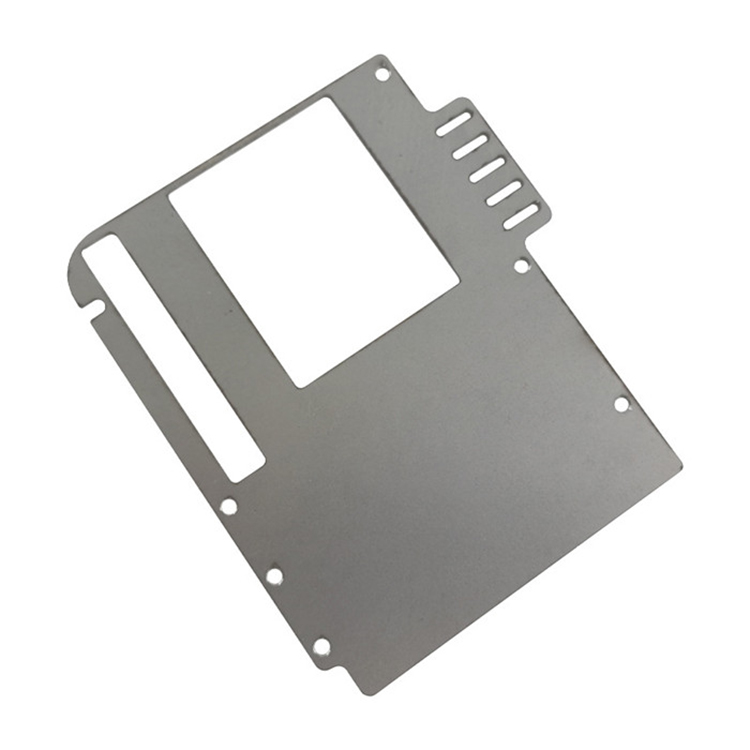Ensuring Precision and Consistency in Aluminum Sheet Stamping: Essential Quality Control Measures
2024-04-17
Aluminum sheet stamping is a highly versatile manufacturing process used to produce a wide range of components for various industries. Precision and consistency are paramount in ensuring the quality of stamped parts, which can directly impact product performance, safety, and customer satisfaction. In this blog, we'll explore essential quality control measures that manufacturers can implement to uphold the precision and consistency of aluminum sheet stamping parts.
1. Material Inspection: The first step in ensuring quality in aluminum sheet stamping is to thoroughly inspect the raw material before the stamping process begins. This includes verifying the alloy type, thickness, and surface condition to ensure they meet the required specifications. Any deviations or defects in the material should be addressed or rejected to prevent issues during stamping.
2. Tooling Maintenance: Regular maintenance and inspection of stamping dies and molds are crucial for maintaining precision and consistency in part production. Tooling should be cleaned, inspected for wear or damage, and repaired or replaced as needed to ensure optimal performance. Proper lubrication and cooling systems should also be in place to prolong tooling life and prevent defects such as galling or scoring.
3. Die Setup and Calibration: Proper die setup and calibration are essential for achieving accurate and consistent stamping results. This includes aligning the dies correctly, setting the appropriate clearance between the punch and die, and calibrating the press machine for the desired tonnage and speed. Die setup parameters should be documented and followed meticulously to ensure repeatability and consistency in part production.
4. Process Monitoring: Continuous monitoring of the stamping process is essential for detecting any deviations or abnormalities that may affect part quality. This can be achieved through real-time monitoring systems that track key process parameters such as press force, temperature, and cycle time. Any deviations from the established parameters should trigger immediate corrective actions to prevent non-conforming parts from being produced.
5. In-Process Inspection: Implementing in-process inspection checkpoints at various stages of the stamping process helps identify potential defects early and prevent them from propagating downstream. This can include visual inspections, dimensional measurements, and non-destructive testing techniques such as ultrasonic testing or eddy current inspection. Inspections should be performed by trained operators using calibrated measuring equipment to ensure accuracy and reliability.
6. Statistical Process Control (SPC): SPC techniques can be used to monitor and control the stamping process by analyzing data collected from in-process inspections. By plotting control charts and performing statistical analysis, manufacturers can identify trends, detect process variations, and take proactive measures to maintain process stability and consistency. SPC helps minimize variability and ensure that parts meet the specified quality standards consistently.
7. Final Inspection and Testing: Before parts are released for assembly or shipment, they should undergo a comprehensive final inspection and testing process to verify their quality and conformance to specifications. This may include dimensional inspection, visual inspection, surface finish evaluation, and functional testing to ensure that the parts meet all requirements. Non-conforming parts should be identified and segregated to prevent them from reaching customers.
8. Continuous Improvement: Quality control in aluminum sheet stamping is an ongoing process that requires continuous improvement and refinement. Manufacturers should regularly review and analyze quality data, solicit feedback from stakeholders, and implement corrective and preventive actions to address any identified issues or opportunities for improvement. By striving for continuous improvement, manufacturers can enhance the precision and consistency of stamped parts and maintain high levels of customer satisfaction.
In conclusion, implementing robust quality control measures is essential for ensuring the precision and consistency of aluminum sheet stamping parts. By focusing on material inspection, tooling maintenance, die setup, process monitoring, in-process inspection, statistical process control, final inspection, and continuous improvement, manufacturers can achieve superior quality, minimize defects, and meet the demanding requirements of modern manufacturing industries.



